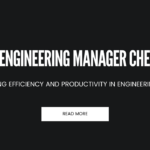
As an Engineering Manager, I have worked with various people across different organizations. I have faced different challenges when it comes to mentoring and growing engineers and particularly around High Performers.
Having such people in a team could be great for the overall team and help them deliver high value for the company.
Spotting High-Performers
There are several ways to spot the high achievers on your team:
- They take charge easily and display natural leadership qualities – often helping fellow team members achieve their goals.
- They have strong long-term focus and self-discipline. High achievers like to set a goal and then work persistently towards it until it has been completed.
- High achievers frequently have an internal locus of control. They believe that they, and they alone, are responsible for where they’ll end up in life.
- They like to be the “go-to” person in their team, company or industry and are willing to put in the effort needed to develop their expertise – often pursuing professional development independently.
- High achievers typically have a positive mindset. They see challenging projects as opportunities, not threats. Their positive outlook helps them overcome setbacks and stick with a task until completion.
Helping High Achieving individual to thrive
Provide ownership and autonomy
Normally, individuals with such traits are highly driven and goal-oriented. They want to deliver on any project they embark on and have the skills and leadership experience to do that. They don’t need hand-holding and micromanagement. Furthermore, that would be destructive for individuals navigating a complex environment and delivering challenging end-to-end projects.
The best thing you can do as a manager is to provide them with enough details and give ownership and autonomy to the individual and the team to deliver the project.
This will show that you trust the expertise of the engineer in question and will allow them to innovate and come up with a solution that can scale.
Clarify expectations
The sky is the limit regarding what your high achievers can accomplish. However, they need to understand what you expect of them and how you will measure their performance.
Use management through objectives to help your high achievers understand the organization’s goals, and then work with them to align their personal goals with those of the business.
Keep It Interesting
High achievers prioritise interesting and challenging work more than less achievement-driven people.
Keep your high achievers engaged with stimulating work activities – especially if there are limited opportunities for advancement. Start by getting them to perform a personal SWOT Analysis to better understand their strengths and weaknesses. Assign tasks and projects that play to and develop their strengths, and work on minimizing their weaknesses with training that helps them manage these.
High achievers typically want to expand their skill sets, so cross-train them to work in other positions. This will add diversity to their roles and satisfy their desire for professional development. (Clearly, it will also increase the flexibility of your team.)
As you work on minimizing weaknesses, find ways for your high achievers to earn quick wins to build their confidence and motivation. Their work needs to be challenging but not overly so – use the Inverted-U Model to find the right balance between pressure and performance.
Accept Honest Failure
In business, failure is generally seen as a bad thing and one of the primary reasons high achievers plateau is fear of failure.
Ironically, the more that others celebrate a high achiever’s successes, the more afraid they can become of making mistakes. This causes them to shy away from risky endeavours and new challenges, locking them into familiar routines and causing their career trajectory to level off while their peers continue to rise.
This doesn’t mean you should stop rewarding success, but you should help high achievers overcome any fear of failure. To do this, you can encourage them to take risks and to understand that “honest failure” – when someone has failed, despite having worked hard and made their best effort – can be a necessary precursor to even greater success.
Provide Feedback
High achievers need feedback, but not in the way you might initially think. Some high achievers care little for positive feedback and praise. They’d rather receive constructive criticism to help them improve, although this certainly isn’t true in all cases!
Use Stop – Keep Doing – Start to give your high achievers regular feedback, and use a more in-depth approach for more thorough performance reviews.
Remember to balance your constructive criticism with praise and thanks, even if your high achievers appear indifferent to recognition.
Key Points
High achievers have a deep-seated need to achieve. They’re driven, natural leaders with the persistence and self-discipline needed to accomplish long-term goals. However, they must be managed appropriately to help them achieve their full potential.
As part of this:
- Clarify your expectations.
- Keep work diverse and interesting – high achievers like a challenge, but try not to set the bar too high.
- Assign tasks and projects that stretch their skills and put them in leadership roles whenever possible.
- Give them a chance to shine through “special assignments” and participation in committees and task forces.
- Embrace honest failure and create an environment where high achievers won’t be afraid to try out new ideas and put new skills to the test.
- Provide regular feedback so that people know how to improve their performance. But balance constructive criticism with praise and thanks for their hard work.
Frequently Asked Questions (FAQ)
Companies like Meta, Google, and Apple set clear expectations for outcomes and impact, provide decision-making frameworks, and align individual goals with broader company objectives. Regular check-ins, performance reviews, and transparent communication channels help ensure that engineers’ work aligns with the company’s strategic direction.
Common frameworks include OKRs (Objectives and Key Results), Agile methodologies, and data-driven decision-making processes. These frameworks provide structure and clarity while allowing engineers the flexibility to determine the best approach to achieve their goals.
Companies balance innovation and quality by implementing flexible processes, using sensible defaults, and establishing guardrails. They also invest in robust testing, continuous integration, and deployment pipelines to ensure that new features and innovations do not compromise the stability and reliability of their products.
Companies foster psychological safety by encouraging open communication, celebrating experimentation and learning from failures, and creating an inclusive environment where diverse perspectives are valued. Leaders play a crucial role in modelling these behaviours and ensuring that engineers feel safe to take risks and innovate.
Support structures for less experienced engineers include mentorship programs, onboarding processes, access to resources and training, and regular feedback from more experienced colleagues. These structures help new engineers acclimate to the company’s culture, develop their skills, and contribute effectively to their teams.
Join Me
Follow me on Twitter and LinkedIn for more Engineering, Leadership and Growth advice.




[…] Consider that the interviewer is an Engineering Manager. They want to understand how you’ll be creating the system. They will help you with the […]